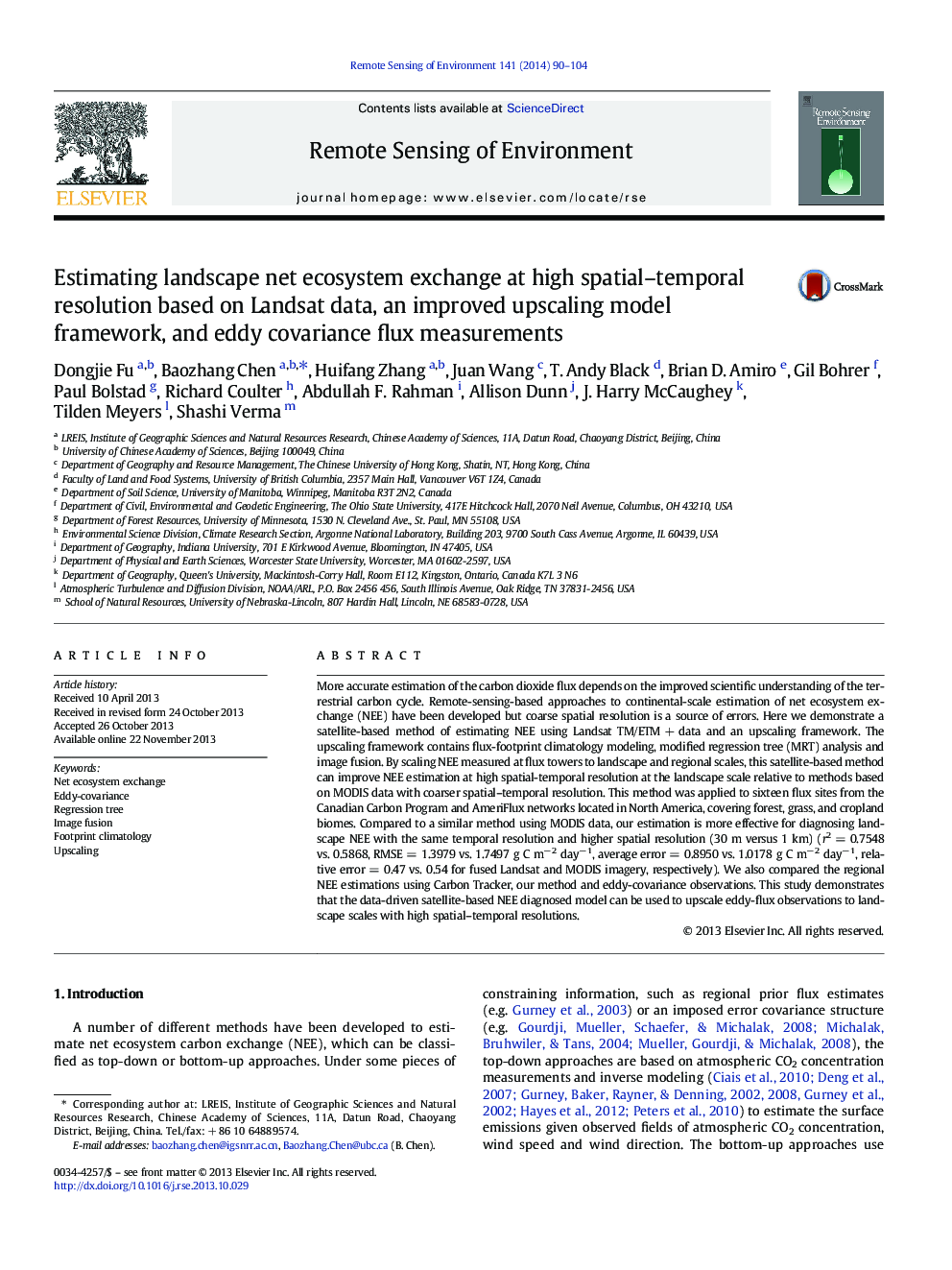| Article ID | Journal | Published Year | Pages | File Type |
|---|---|---|---|---|
| 6346818 | Remote Sensing of Environment | 2014 | 15 Pages |
Abstract
More accurate estimation of the carbon dioxide flux depends on the improved scientific understanding of the terrestrial carbon cycle. Remote-sensing-based approaches to continental-scale estimation of net ecosystem exchange (NEE) have been developed but coarse spatial resolution is a source of errors. Here we demonstrate a satellite-based method of estimating NEE using Landsat TM/ETM + data and an upscaling framework. The upscaling framework contains flux-footprint climatology modeling, modified regression tree (MRT) analysis and image fusion. By scaling NEE measured at flux towers to landscape and regional scales, this satellite-based method can improve NEE estimation at high spatial-temporal resolution at the landscape scale relative to methods based on MODIS data with coarser spatial-temporal resolution. This method was applied to sixteen flux sites from the Canadian Carbon Program and AmeriFlux networks located in North America, covering forest, grass, and cropland biomes. Compared to a similar method using MODIS data, our estimation is more effective for diagnosing landscape NEE with the same temporal resolution and higher spatial resolution (30 m versus 1 km) (r2 = 0.7548 vs. 0.5868, RMSE = 1.3979 vs. 1.7497 g C mâ 2 dayâ 1, average error = 0.8950 vs. 1.0178 g C mâ 2 dayâ 1, relative error = 0.47 vs. 0.54 for fused Landsat and MODIS imagery, respectively). We also compared the regional NEE estimations using Carbon Tracker, our method and eddy-covariance observations. This study demonstrates that the data-driven satellite-based NEE diagnosed model can be used to upscale eddy-flux observations to landscape scales with high spatial-temporal resolutions.
Keywords
Related Topics
Physical Sciences and Engineering
Earth and Planetary Sciences
Computers in Earth Sciences
Authors
Dongjie Fu, Baozhang Chen, Huifang Zhang, Juan Wang, T. Andy Black, Brian D. Amiro, Gil Bohrer, Paul Bolstad, Richard Coulter, Abdullah F. Rahman, Allison Dunn, J. Harry McCaughey, Tilden Meyers, Shashi Verma,
